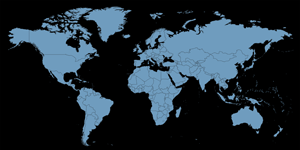Global Issues

India
• 42.7 million females estimated missing from population due to cultural practices (2010).
• An estimated 10 million prostitutes.
• Source, destination, and transit country for men, women, and children subjected to forced labor and sex trafficking.
• Women and girls are trafficked within the country for the purposes of forced prostitution.
• Around 160,000 Nepalese women were trafficked and are held in India’s brothels.
• In Bombay, on average, girls are bought by six men a day, who pay US$1.10 – 2 per sex act (Robert I. Freidman, “India’s Shame: Sexual Slavery and Political Corruption Are Leading to An AIDS Catastrophe,” The Nation, 8 April 1996).
• Approximately 20,000 or 20% of women in prostitution in Bombay are under 18 (Friedman).
• 109,559 cases of crime against women – including molestation, sexual harassment, rape, dowry deaths, and abduction–through August 2009.
• 35.1 % of women report intimate partner physical violence in their lifetime.
• 10% of women report sexual intimate partner violence in their lifetime.
• 33.5% of women report intimate partner and/or not-intimate-partner physical violence in their lifetime.
• 33.5% of women report intimate partner and/or not-intimate-partner sexual violence in their lifetime.
• An Indian woman loses an average of at least five paid work days for each incident of intimate partner violence.
Advocacy:
• Dr. Sunitha Krishnan established the NGO Prajwala in 1996 after the evacuation of one of the oldest red-light districts in Hyderabad. Prajwala now runs a successful second-generation prevention program in 17 transition centers for children of prostituted women. The NGO’s strategy is to remove women from brothels by giving their children educational and career opportunities.
• Magistrate Swati Chauhan was appointed in 2008 to preside over Mumbai’s newly created special court for administering the Immoral Trafficking Prevention Act (ITPA). In that time, she has cleared hundreds of backlogged trafficking cases, issued rehabilitation orders for more than 1,200 rescued girls and women, and ensured that sex trafficking victims were not punished under anti-prostitution provisions of the ITPA Indian law.
• Asia Pacific Network of Sex Workers is a coalition of sex worker groups and projects working on issues of HIV and human rights for female, male and transgender sex workers across Asia and the Pacific.
Sources: UN Women Violence against Women Prevalence Data: Surveys by Country 2011; Child and Woman Abuse Studies Unit at London Metropolitan University; UN Development Program report Power, Voice and Rights: A Turning Point for Gender Equality in Asia and the Pacific; United Nations Development Fund for Women; U.S. Department of State Trafficking in Persons Report 2011; U.S. Department of State Trafficking in Persons Report 2009; Ethics in Asia-Pacific UNESCO, 2004
